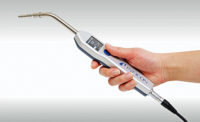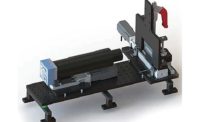While many European automotive OEMs work toward expanding their market globally, they often prefer their components to be made locally. One supplier that many German carmakers rely on for printed circuit board assemblies is DELTEC Automotive GmbH & Co. KG (DAGC).
Founded in 1992, DAGC operates an ISO 14000- and ISO 9000-certified manufacturing facility in Furth im Wald, Germany. A wide range of products are made at the plant, including ignition and control electronics, window control systems, sensors, USB charging adapters, headlights and taillights.
DAGC performs both surface-mount and through-hole assembly, as well as extensive product testing. Soldering methods include reflow, wave and selective. Many products also receive a lacquer or silicone coating.
High production and quality control are important to DAGC, says Thomas Fischer, production and process technology manager at DAGC. To achieve these goals, the company uses networked Viscom AG equipment for automated solder paste, X-ray and optical 3D inspection of its products.
Several S3088 SPI solder-paste-inspection systems and Panasonic SP18 stencil printers are used in production, and the two types of machines are networked to automatically exchange data. Depending on the solder paste offset values determined by the SPI system, the print offset gets corrected in intermediate steps (involving several PCBs), rather than one large step.
“This inspection technology [provides us] information about volume, paste height and other aspects,” explains Fischer. “[It lets us immediately] see the actual differences between components, which could not be determined in any other way.”
DAGC uses several X-ray inspection systems to ensure the quality of solder joints on products that feature LED lighting. Automated systems feature Uplink Process Analyzer software, which allows operators to immediately indentify defects (such as air inclusions or solder beads), analyze them and define defect limits on an offline PC. Besides saving money, the software provides complete documentation and optimizes product quality.
DAGC also regularly uses an X8011 PCB plus machine for 2D manual X-ray inspection. Its appeal, according to Fischer, is simplicity. “We can take a PCB to the machine and quickly see what is happening with a critical solder joint, without having to set up an elaborate program.”
One machine on the assembly floor (the Viscom X7056RS) has X-ray and optical inspection capabilities, enabling DAGC to run a combined inspection as needed. Fischer says the unit is most often employed in cases when optical inspection is limited due to shadowing or similar hindrances.
Other optical inspection units include the high-speed S3088 ultra and S3088 ultra gold with a resolution of up to 8 microns. Fischer notes that these systems are especially effective at detecting small outline transistor component bodies against a PCB background.
Each production line is equipped with a Viscom monitor for statistical process control. When a real defect is detected, the monitor displays just-in-time information that indicates whether specified limits have been maintained or intervention is required.
For more information on inspection systems, call 678-966-9835 or visit www.viscom.com.








